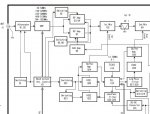ScannerSK
Member
I do not consider my situation to be that out of the ordinary as to what some may face in many cities....
If someone reads this post and says .. hmm, my scanner is dead and receiving nothing and this is how I could fix it, then my typing is not in vain.
For some ... that att button may work, and some .. as in my case, it will not....
If it was me .. I would have a custom made variable attenuation circuit on my scanner and that is likely how I will do things going forward. But not for today.
Wow, my thoughts exactly. Recently, I took the time on the PSR-600 to remove the RF shields covering the RF input and band pass filters in an attempt to FIX the PSR-600 so that it would work properly in the VHF band. The short of the story is that no changes I have tried to date in the VHF band pass filter has helped. I did not attempt to turn down the gain of the front-end RF amplifier as all frequencies from 25-512 MHz feed into that amplifier and would be affected however that may be my next and best attempt. The only thing that helped was two variable potentiometers (around 5K or 10K) (one in series with the incoming signal and one in parallel between the scanner input and ground). This is really pathetic when Uniden scanners do not suffer from the same problem in the Denver area. But, I love the features of the GRE model so I keep it despite this issue. I'm also fortunate to live in a more rural setting and do not have to put up with this issue on a daily basis.
The ATT button did not help in my case either.
Shawn


